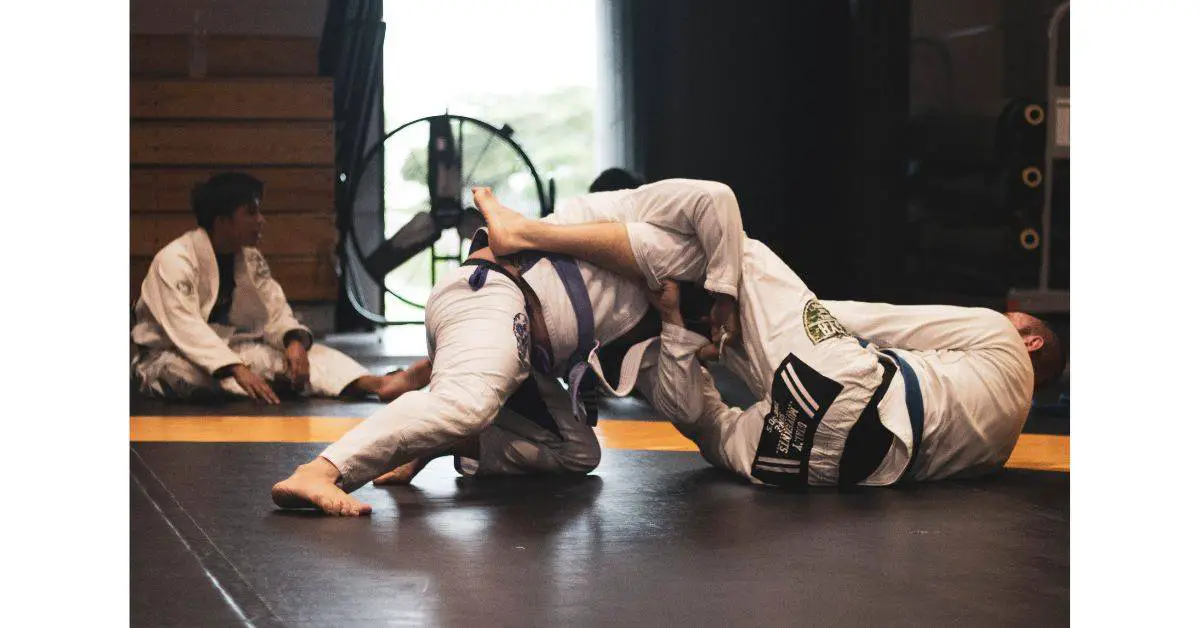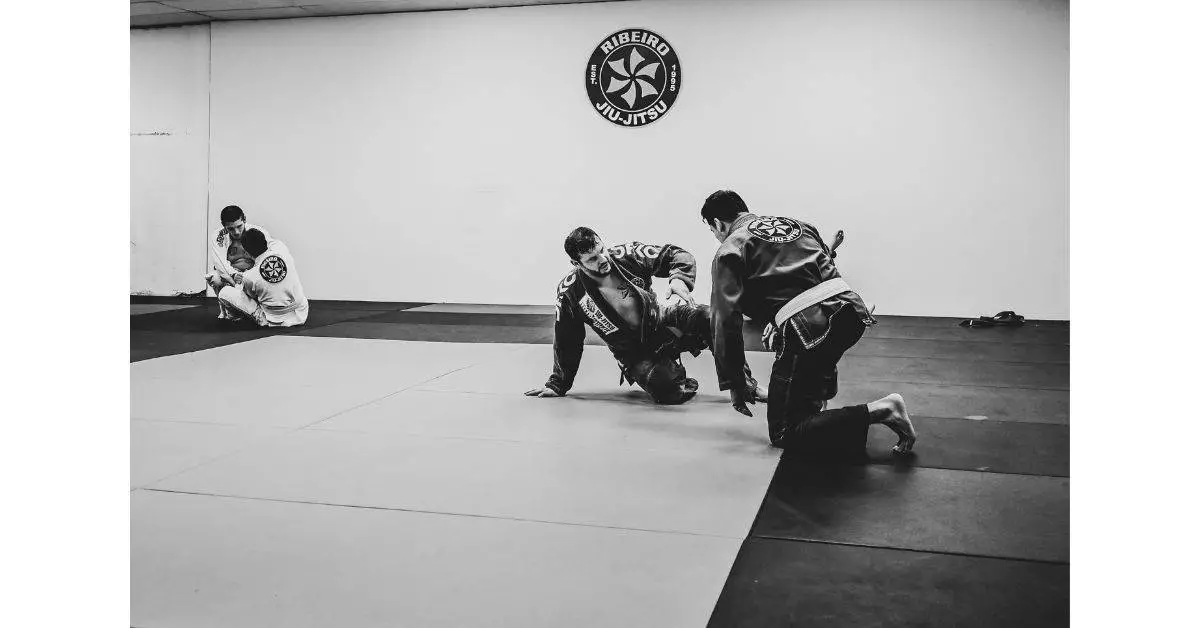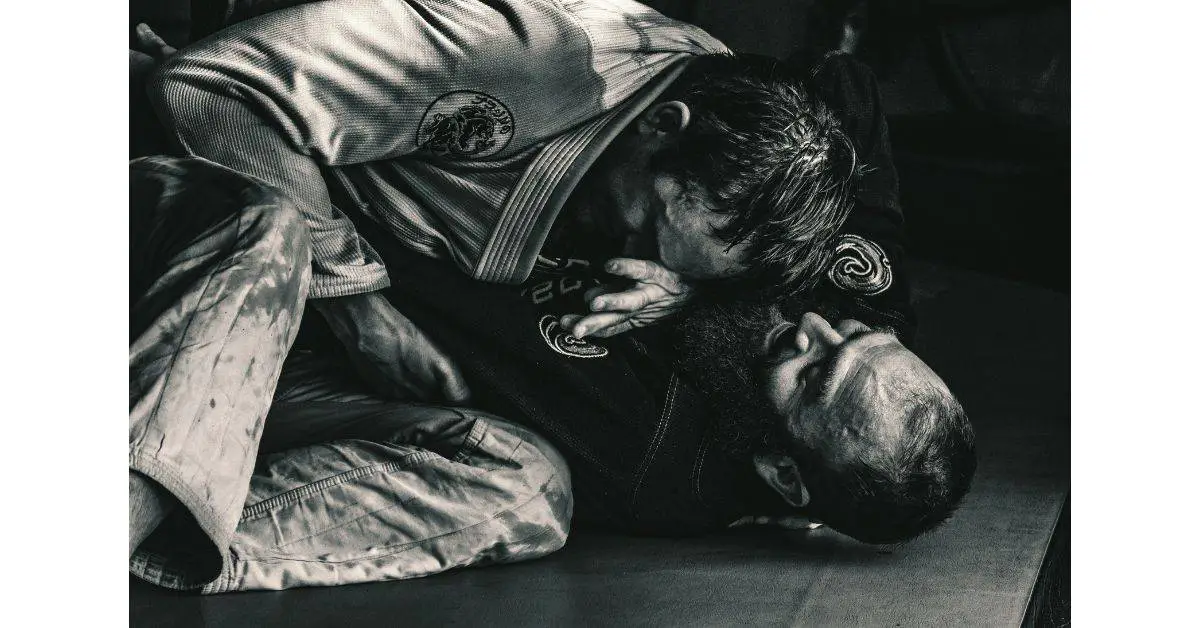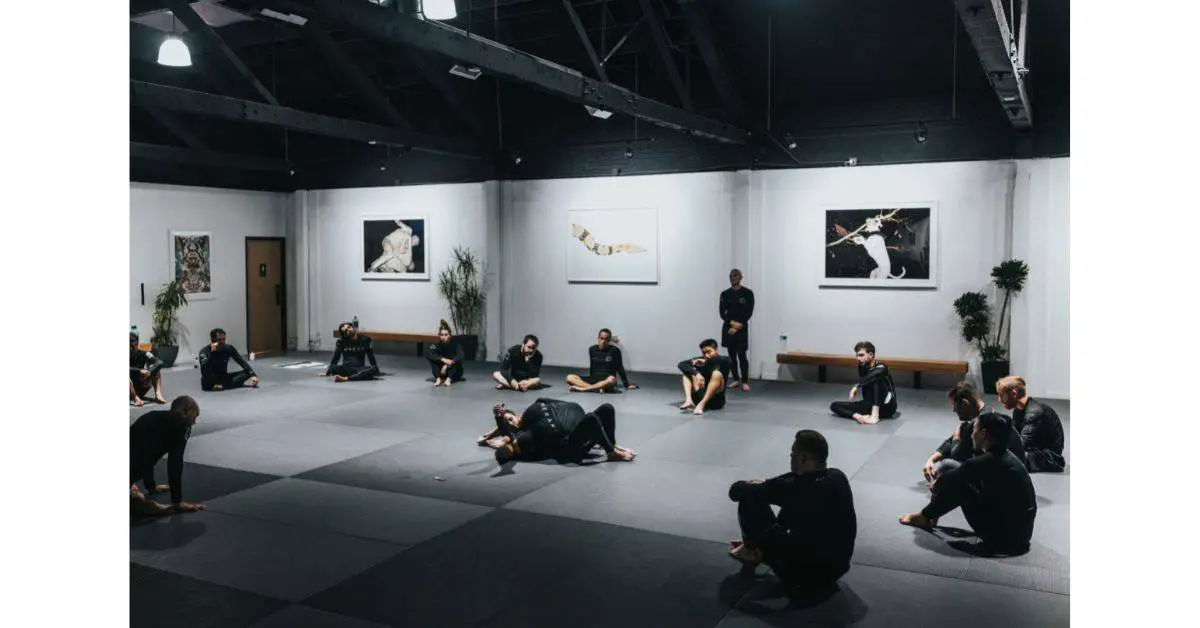Brazilian Jiu-Jitsu, or in short, BJJ, is one of the most effective martial arts globally. Because of that, it has exploded in popularity in the last couple of years. And it’s not just that. It also provides countless physical and mental benefits.
This article will discuss and examine the pros and cons of BJJ.
Throughout the years, I saw various instances where people used ground grappling techniques, which is what you learn in Brazilian Jiu-Jitsu—for self-defense. As a result, I know this stuff works.
I’ve also had the honors to face BJJ trainees. Now I know that I shouldn’t have done it. I mean, really, all of them came out victorious, and I didn’t even know what had just happened.
But, before you start your own martial arts journey, you may want to familiarize yourself with the pros and cons of each fighting style. As a result, I’ve decided to write this article, for those who may struggle to start their training.
People have been using the pros and cons method all throughout history. In fact, it’s one of the best ways to reach decisive conclusions, regardless of your indecisiveness. So, this article will do just that, help you reach a more decisive conclusion.
Before diving into the article, I encourage you to read more about the deadliest martial arts globally. Who knows, you may end up learning on from this list.
The Pros of BJJ
The first part of this article will discuss the pros of Brazilian Jiu-Jitsu. Before we do that, I want to emphasize the positive impact martial arts had on millions upon millions of trainees.
Throughout history, people participated in fighting classes because they had to learn self-defense. In most instances, times were times of war. As such, learning to use your body to inflict massive damage swiftly—was, quite literally, a must.

If we examine the history of the most effective martial arts, we understand that they didn’t just rise to popularity. They became prevalent because of their effectiveness and since they’re applicable to real life, dangerous situations.
The first advantage will examine some of the history. Likewise, it’ll discuss and demonstrate how it came to be what it is today.
Before continuing, ensure you follow the link if you want to buy a high-quality Jiu-Jitsu Gi. This is a must for anyone serious about training in grappling fighting styles, such as Brazilian Jiu-Jitsu. So, do check it out.
#1 – Made for self-defense
The first point in favor of BJJ is that it was made for self-defense. Martial arts are here for a reason. People wouldn’t have dedicated their entire lives if it had no purpose (other than making money).
BJJ’s purpose is to teach others how to fight fiercely. In fact, it’s why it became so popular – its trainees need to know how to use their body to cause massive damage quickly. Initially, samurais began learning ground grappling in case they found themselves afoot and weaponless.
So, the samurais had a purpose. They wanted to know how to use their body parts to incapacitate any opponent—regardless of their size or weight.
The samurais found Jiu-Jitsu suitable, as it fulfilled all their needs. Then, people were amazed to see it in action in the first UFC event. Royce Gracie, a part of the bloodline of the Gracie family, won by using it in the first ever regulated fighting league.
Because people were amazed to see that, they wanted to learn it. Not just learn it and then forget all about it; but to learn it and familiarize themselves with methods to defend themselves.
Although times were not times of war, they wanted to be competent fighters, as there’s no downside to that.
To conclude, because BJJ was made for self-defense, it teaches effective fighting techniques—suitable for that purpose. As such, if learning self-defense is one of your goals, practicing Brazilian Jiu-Jitsu—is a splendid choice.
#2 – Highly effective martial art
The second pro we’ll discuss is Jiu-Jitsu’s effectiveness. Most martial arts are suitable for self-defense because that’s their purpose: to teach others to fight fiercely.
BJJ is no different. Doing it for the sake of learning to fight—is suitable. As a result, many of its trainees don’t want to gain any result other than knowing to fight effectively.
Of course, it provides countless mental and physical benefits, but we’ll discuss that in one of the following benefits.
BJJ is the art of ground grappling. If you’re not familiar with it, it includes various submissions, chokes, and holds that force the opponent to “tap out”. In real life, as you can imagine, there’s no tapping out. Therefore, using it in real life—requires your caution.

Most people believe that punching is the most effective fighting technique. However, that’s not accurate. Rather, grappling is the most effective because most people don’t know how to defend against it.
As such, if you’re facing a grappler and don’t know how to defend yourself against such means, you’ll find yourself on the ground—praying for dear life—soon.
#3 – It’s a safe martial art
The third argument in favor of the art of ground grappling is its safety. Training in a safe environment—is difficult in the world of martial arts. Because of that, the rate of injuries while training in one of these riskier sports—is higher than other doings.
BJJ is a safe martial art because it doesn’t involve any kicking or punching, which are the two most harmful fighting techniques. As such, there’s no chance to get injuries like concussions. And still, getting injuries while doing Jiu-Jitsu—can occur. So, don’t give yourself a hard time when it does.
BJJ, like any other sport, has some risks of injuries. Its trainees will, sometimes, walk out the gym with a hand, finger, foot, leg, back, or even a knee injury. On the bright side, the risk of injuries exists in any sport; and BJJ is no exception. Therefore, don’t hesitate to start your training, although this injury risk. (Source)
As such, if one of your worries is getting injured, don’t worry as much about it, as it’s one of the safest martial arts you can do.
Likewise, if you want to read more about tips & tricks to avoiding injuries while doing BJJ—follow the link to an article of mine on the topic.
#4 – Provides mental and physical benefits
The last argument in favor of doing BJJ is the many physical and mental benefits it provides. Essentially, that’s the most potent one and may be why you start your training, hence your purpose.
Yes, your purpose doesn’t have to be learning self-defense. Rather, it can be anything—ranging from losing weight to gaining confidence to feeling more fulfilled.

That is the beauty in the world of martial arts. You can have anything drive you. In fact, the variety is as vast that you may see 10 trainees with different purposes. While one wants to lose weight, the other wants to boost his self-esteem.
The following list is some benefits you may receive when doing BJJ: (Source)
- Increases self-confidence
- improves pain tolerance
- teaches you to use self-defense
- decreases overall stress
- assists you in controlling aggressiveness
- shortens reaction time
- improves your performance under stress
- enhances self-esteem
- betters physical shape
- betters social life
As you can see, the list is long. Nonetheless, it goes much further than that. Some people may want to connect to their spiritual selves. As a result, they’ll incorporate meditation in their training. It really does happen.
Therefore, the next time someone asks you why you practice Jiu-Jitsu, you’ll be able to spit many answers immediately. Likewise, it’ll help you stay more consistent, as you’ll know your purpose, which is one of the best things for consistency.
If you want to progress faster in BJJ, follow the link to an article of mine on the topic. Spoiler alert, one of the tips there is to know your purpose.
Participants report that the therapeutic benefits of BJJ practice include assertiveness, self-confidence, self-control, patience, empathy, empowerment, improved sleep, and mindfulness.
SOURCE
The Cons of BJJ
Thus far, we’ve discussed everything in favor of Brazilian Jiu-Jitsu. Now, it’s time we step outside the positive and enter the world of all its disadvantages.
While these simply don’t equal to the pros, they’re something to have at the back of your mind. You may one day decide you want to learn another martial art because of them. So, knowing them—is crucial to your progression and decision-making process.
Without further ado, let’s dive into the three arguments against learning BJJ.
Disclaimer: don’t let these stop you from starting to train. Doing Jiu-JItsu is one of the best decisions you can make in your life.
Let’s begin.
#1 – Doesn’t involve punching and kicking (striking)
The first argument against BJJ is: it doesn’t involve punching and kicking. Essentially, it doesn’t incorporate striking techniques.
If you’ve ever watched elite fighters go at it, you know how dangerous it can be when one contender doesn’t know how to defend the opponent’s moves. As a result, being as dynamic as possible and knowing as many techniques as possible—is crucial, both for self-defense and fighting.
BJJ is the art of ground grappling; while it’s one of the most effective fighting technique, that is all it teaches. That said, other Jiu-Jitsu styles, such as Gracie (GJJ), involves striking techniques. As a result, it’s more effective than BJJ.
We can deny the importance of throwing a fierce elbow at the attacker when on the ground. Let me clarify, if you’ve never learned and trained to do so—you won’t do it in a real fight. As a result, if your attacker knows how to throw a fierce punch or kick, one will also be more likely to win.
Yet, many BJJ trainees later complete their training in a striking-based martial art, such as Muay-Thai or boxing. That allows them to be more complete and capable fighters. If you do the same, you’ll be removing this con out from the list.
#2 – Won’t prepare you for street fights
The second disadvantage we’ll discuss—is the aggressive nature street fighting presents. When you start to fight someone in the street, you most likely will be surprised to the extent of the aggressiveness and brutality it brings.
Because of that, to come out on top, you must be willing to specifically train in more explosive scenarios. It’s a common understanding that the more aggressive person will win in a street fight, regardless of technique.

BJJ won’t teach you to do so. To learn how to properly deal with such a dangerous scenario, you will need to learn a martial art, such as Muay-Thai. By doing so, you eliminate this and the previous cons.
However, by itself, Jiu-Jitsu doesn’t teach you how to tackle a street fight. It won’t prepare you to take a potent punch to the nose before you even know a fight has started. So, it’s not as applicable to street fights as other martial arts, such as Muay-Thai and MMA.
If you want to learn which are the best martial arts for street fighting, follow the link to an article of mine on the topic.
#3 – Not suitable for multiple opponents
The art of ground grappling is only suitable against a single opponent because it takes time to execute. Let’s imagine the following scenario:
You’re in a fight with two fellas. Out of nowhere, you begin by knocking one to the floor and start choking him. Yes, you say to yourself, you have the advantage. Then, you feel something in your skull, and you go unconscious. The other guy kicked you in the face.
That’s the reality. If you want to perform a choke or submission on someone, you better ensure no one is about to kick you in the face. It can, and has already happened.
Other martial arts are more suitable for fighting multiple opponents. However, an important disclaimer on the topic is: beating two people is not double as hard as beating one, it’s much more than that. You now have to face two people, both attacking and defending. So, it’s more like 4 times as hard.
- Muay-Thai
- Jeet Kune Do
- MMA
- Krav Maga
- Kickboxing
Are more suitable for fighting multiple opponents because they include quick throws. That’s unlike BJJ, which requires you to go to the ground with someone, and thus invest all your effort onto one attacker. So, the other one is free to hit you. That’s not what you want to see.
Should I Learn BJJ?
When examining the list of pros and cons, we see a repeating pattern. We can eliminate all the cons by complimenting our knowledge by learning a striking-based martial art, such as Muay-Thai. Doing so, you become a complete fighter, capable of beating most people on the street.
You should Brazilian Jiu-Jitsu, or BJJ, because it teaches effective, practical, and applicable fighting techniques, primarily ground grappling. Moreover, it provides countless mental and physical benefits, such as increased confidence, better self-esteem, and lower stress and aggression levels.
When discussing a single opponent, BJJ is most suitable for that case, as you’ll be able to go to the ground against the attacker.
However, when two are involved, the instance gets much tricker, as you constantly have to divide your attention to both attackers. And, as you can imagine, it’s not as easy when using chokes and submissions.
Final Words
BJJ is one of the best martial arts worldwide. It teaches highly effective fighting techniques, called ground grappling. Likewise, it grants its trainees countless mental and physical benefits. As a result, more and more people start their martial arts journey in it.
However, it does have some disadvantages, such as not being as applicable to street fights. However, you can quite literally eliminate all the cons by learning a striking-based martial art, such as MMA or Muay-Thai. That allows you to become a much more complete and competent fighter.
If you enjoyed reading this article, I encourage you follow the link to read about the best ways to train BJJ at home. By doing so, you’ll be able to save plenty of money and progress faster. Likewise, follow this link to look at the best grappling dummies for your money.

